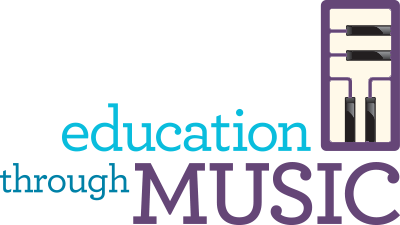Celebrating Dr. Martin Luther King, Jr.
We celebrate the life of Dr. Martin Luther King, Jr. A leader in the civil rights movement, Dr. King fought for equal rights for ALL people.
At Education Through Music, we are committed to furthering Dr. King’s dream and work hard every day to support students in under-resourced schools. We will continue to fight until every student, no matter their background or circumstance can access high-quality music education.
To honor Dr. King’s commitment to pursuing equity and providing access, ETM Programs Liason Supervisor Naomi Fernandez created this special music lesson (designed for students in 4th-6th grade), allowing students and their families to take a closer look at Dr. King’s famous “I Have a Dream” speech.
There is music all around us, even in Dr. King’s speech, from his words’ cadence to the sounds the crowd makes while he speaks. Did you know: both speeches and songs use similar literary devices to make listeners think and feel something deeply?
Take a closer look at Dr. King’s Speech with your students or family.
Listen or Watch
Dr. Martin Luther King, Jr. delivered his famous “I Have a Dream” speech at the March on Washington for Jobs and Freedom on August 28, 1963.
You can listen to or watch many versions of the speech. Here are some of our favorites:
- Freedom’s Ring, an animated version of Dr. King’s speech
- Audio Recording from American Rhetoric
- Archival video from 1963

Moment of Reflection

Take a moment to think and reflect on what you just heard or watched.
What is your ONE WORD response to Dr. King’s speech?
Going Deeper
What are some of the keywords or phrases that stuck out to you?
Why do you think they were so memorable?

Going Deeper

Dr. King uses many literary devices in his speech, including ANAPHORA and ALLITERATION.
ANAPHORA
The repetition of a word or phrase at the beginning of a series of sentences or phrases.
Examples: Repetition of sentences beginning with “I have a dream” or “let freedom ring” in Dr. King’s speech.
ALLITERATION
Using words or phrases that start with the same letter or sound.
Examples: “Rise from the dark and desolate,” “the marvelous new militancy,” “trials and tribulations.”
Make Connections
Literary devices like ANAPHORA and ALLITERATION can also be used in music and song lyrics.

Examples in Music
Draw Conclusions
Speeches and songs that use literary devices can make listeners think and feel something deeply. This means they are having both a THINKING RESPONSE and an EMOTIONAL RESPONSE.
If literary devices make speeches more powerful, clear, and memorable, what impact do they have when used in song lyrics?

Activity

How do YOU respond to Dr. King’s Speech?
Choose one of the activities below to explore your own response to “I Have a Dream.”
Activity 1: Speech Paraphrase
Rewrite a section of Dr. King’s speech in your own words using your anaphora or alliteration.
Activity 2: Body Percussion
Create a body percussion routine to accompany the words of Dr. King’s speech.
Activity 3: Picture Collage
Create a collage of images that make you think of Dr. King’s speech.
Share with ETM
Please consider recording your responses and sending them to ETM!
You can send your responses to media@etmonline.org.
Thanks to ETM Instructional Supervisor Naomi Fernandez for helping to create this lesson. And thank you to Peardeck for the use of their images.


Want to learn more? Check out our other FREE distance learning resources.




